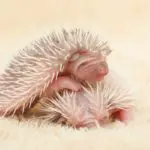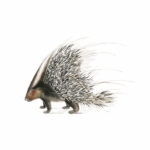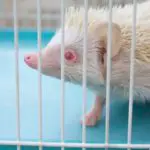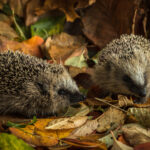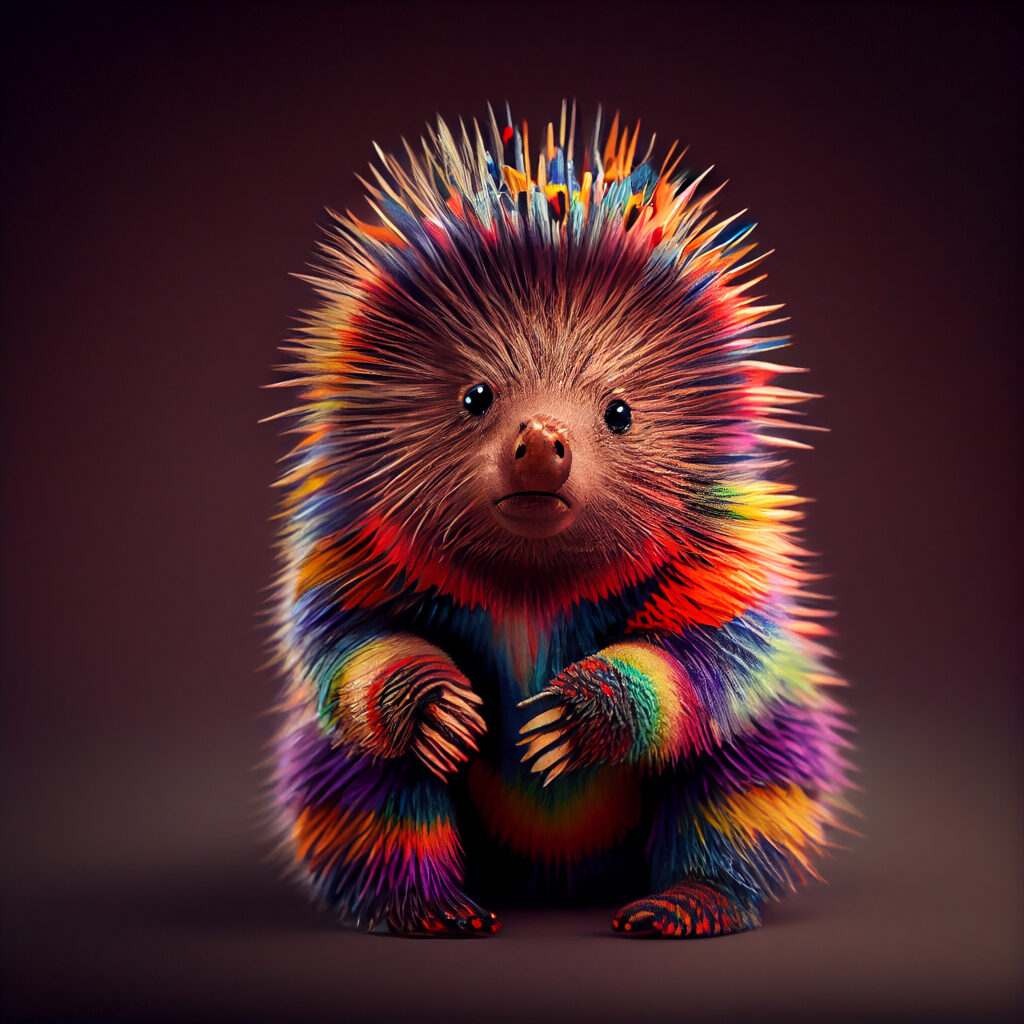
Discover the quirky world of porcupine love and learn what a baby porcupine is called!
Quick Answer: A baby porcupine is affectionately known as a porcupette.
Key Takeaways:
- Baby porcupines are known as porcupettes, and they are born with soft quills that harden after a few days; they rely on their mother for warmth and nutrition and require attentive care to ensure healthy development.
- Porcupine breeding involves a yearly cycle where environmental factors and health play a role; mating behaviors like urine spraying, vocalizations, and quill rattling are part of their courtship, and gestation lasts around seven months.
- Legal and ethical considerations in porcupine breeding include adhering to wildlife laws, obtaining necessary permits, and practicing ethical breeding to support conservation efforts and maintain animal welfare.
Understanding Porcupine Reproduction
When you’re looking to understand the world of porcupine breeding, it’s essential to start with their unique reproductive habits. Porcupines typically mate in the late fall and early winter. The conditions for successful breeding include a combination of environmental factors and the health of the porcupines involved.
During courtship, male porcupines have a rather unusual way of wooing females—they spray them with urine. While this might not sound romantic to us, it’s a normal part of porcupine mating rituals. The gestation period for porcupines varies by species but generally lasts around seven months. Successful conception and birth are influenced by factors such as nutrition, habitat, and the age of the porcupines.
The Breeding Cycle of Porcupines
The breeding cycle of porcupines is an annual event. Most species will breed once a year, with the cycle’s onset typically occurring as the days shorten and the weather cools. The duration of this cycle can vary, but it’s marked by distinct behaviors that signal readiness to mate.
In terms of species differences, some may have slightly varied cycles or exhibit different signs when ready to breed. For instance, the North American porcupine is known to engage in a more prolonged courtship than other species. Observers can look for changes in behavior or physical signs in both males and females, such as restlessness or increased vocalization, to determine when porcupines are entering their breeding phase.
Recognizing Mating Behaviors in Porcupines
During the mating season, porcupines display a range of behaviors that signal their readiness to mate. These include vocalizations, such as grunts or screams, and quill rattling, which can serve as a warning or an invitation. Physical displays are also common, with males often performing an elaborate dance to attract a mate.
Understanding these mating behaviors is crucial for anyone interested in porcupine breeding. Not only do they indicate the best time for breeding, but they also have implications for the care of porcupines during this period. For example, a normally docile porcupine may become more aggressive or territorial, requiring extra space and patience from its caretakers.
Gestation Period and Birth Timing
The gestation period for a porcupine is typically around 210 days, but this can be influenced by the porcupine’s health and the conditions of their environment. As the end of this period approaches, it’s important to prepare for the birth of the baby porcupines, also known as porcupettes.
To prepare for the arrival of porcupettes, watch for signs like nesting behavior or a decrease in the mother’s activity level. After birth, immediate post-birth care is crucial. This includes ensuring the mother has a quiet, comfortable space to nurse her young and monitoring both the mother and babies for any signs of distress.
By understanding the intricacies of porcupine reproduction, from the initial courtship to the birth of porcupettes, caretakers can better support these fascinating creatures through their breeding cycle. With the right knowledge and preparation, the process can be a rewarding experience for both the porcupines and those looking after them.
Caring for Baby Porcupines (Porcupettes)
When a porcupine baby, known as a porcupette, arrives, it marks the beginning of a critical and fascinating stage of development. These little ones require immediate and attentive care to ensure they grow up healthy and strong. From the warmth of their environment to their first taste of food, every detail matters in the life of a porcupette.
What Is a Baby Porcupine Called?
A baby porcupine is endearingly called a porcupette. At birth, porcupettes are surprisingly soft and less prickly than one might expect. Their quills, which are soft and bendable initially, begin to harden within a few days. Newborn porcupettes are quite small, typically weighing under a pound, and they depend entirely on their mother for warmth and nutrition.
The First Days: Birth and Immediate Care
The initial days after a porcupette’s birth are delicate. Creating a safe and clean birthing environment is essential for the well-being of both mothers and babies. In these early days, the focus should be on:
- Maintaining a warm and draft-free area for the porcupettes
- Ensuring the mother has easy access to food and water
- Observing the mother’s nurturing behaviors, such as nursing and cleaning
Caregivers should monitor the health of the porcupettes closely, watching for consistent feeding and normal movements. If a porcupette appears weak or is neglected by the mother, intervention may be necessary.
Development Milestones for Porcupettes
As porcupettes grow, they reach several development milestones that are indicators of good health. These include:
- Opening their eyes, which happens within a few days
- Starting to walk, usually within a week
- The hardening of their quills, which provides them with their iconic protection
Caregivers should support these milestones by providing a safe space for the porcupettes to explore and develop their motor skills. Any signs of delayed development or unusual behavior warrant attention and possibly a consultation with a veterinarian.
Weaning and Transitioning to Solid Foods
The transition from mother’s milk to solid foods is a significant step for porcupettes. This weaning process typically begins around two months of age and includes:
- Introducing small amounts of fruits, vegetables, and rodent chow
- Monitoring the porcupettes’ reactions to new foods
- Gradually reducing their dependence on milk
It’s important to ensure that the foods are cut into small, manageable pieces to prevent choking and to observe the porcupettes for any signs of digestive issues.
Socialization and Handling of Young Porcupines
Socialization plays a vital role in the life of a porcupette, particularly if they are being raised by humans. Gentle and regular handling can help them become accustomed to human contact, but it’s crucial to respect their natural instincts and defenses. Here are some tips for safe interaction:
- Approach porcupettes calmly and without sudden movements
- Use gloves to protect against their quills
- Allow the porcupettes to sniff and explore you to become familiar with your scent
Balancing socialization with the preservation of their wild behaviors is key, especially if the goal is to release them back into their natural habitat. By understanding and respecting these unique animals, caregivers can ensure that porcupettes grow into well-adjusted adults, whether they remain in human care or return to the wild.
Health and Wellness in Porcupine Breeding
Breeding porcupines is not just about creating the right environment for mating and birth, but also about ensuring the health and wellness of both the adults and the porcupettes. A keen eye on health aspects, such as common issues, vaccinations, and preventative care, is essential. Regular health check-ups and a clean habitat are the cornerstones of disease prevention. This guide will help you understand how to keep your porcupines healthy throughout the breeding process and beyond.
Common Health Issues in Breeding Porcupines
During breeding, porcupines may face several health challenges. Complications can occur during gestation or delivery, and it’s vital to recognize the symptoms early. Some signs to watch for include:
- Changes in appetite or behavior
- Visible discomfort or distress
- Unusual discharge or bleeding
Prompt veterinary intervention can make a significant difference. Preventative measures, such as a nutritious diet and stress reduction, can help minimize these risks.
Ensuring the Health of Porcupette
Porcupettes have their own set of health concerns. From congenital issues to growth abnormalities, early detection is key. Caregivers should monitor:
- Weight and size
- Development of quills and teeth
- Activity levels and responsiveness
Nutrition, a clean environment, and genetics all play roles in a porcupette’s health. A balanced diet and a safe living space are non-negotiable for their well-being.
Vaccinations and Preventative Care for Porcupines
Vaccinations are a critical part of porcupine care. They help prevent diseases that can be serious or even fatal. The vaccination schedule for porcupines typically includes protection against:
- Rabies
- Respiratory infections
- Parasitic diseases
In addition to vaccines, regular health check-ups and parasite control are vital. Working with a veterinarian to establish a health care plan is the best strategy for keeping your porcupines in top shape.
When to Seek Veterinary Care for Porcupines
Knowing when to seek veterinary care is crucial. Some emergency signs include:
- Sudden lethargy or unresponsiveness
- Difficulty breathing
- Severe injury or trauma
Having a relationship with an exotic animal veterinarian is invaluable. Be prepared for visits with a record of your porcupine’s health history and any current concerns. This preparation ensures your porcupine gets the best possible care.
Habitat and Environmental Needs for Porcupines
Creating the perfect home for porcupines is essential, especially when it comes to breeding. They need a space that’s not just safe, but also one that lets them live as they would in the wild. This means having enough room to move around, places to hide, and activities that keep them busy and happy. Controlling the temperature and humidity is also key in a captive setting, as is making sure they’re safe from predators or the risk of escape. By understanding these needs, you can set up an ideal environment that encourages healthy breeding behaviors.
Creating a Safe Breeding Environment
A safe breeding environment for porcupines includes a well-designed enclosure with the right bedding materials and cozy nesting areas. It’s important to make this space stress-free to encourage natural behaviors that lead to successful breeding. Here’s what you need to consider:
- The enclosure should be spacious and secure.
- Bedding must be comfortable and easy to clean.
- Nesting areas should provide privacy and warmth.
This setup is crucial for the health and well-being of the porcupines and can significantly impact their ability to breed successfully.
The Importance of Space and Enrichment
Porcupines are active creatures that need plenty of space to roam, climb, and forage. This is why having enough room is so important. Enrichment activities also play a big role in their lives, helping to prevent boredom and stress. Some enrichment ideas include:
- Branches for climbing
- Foraging toys for food
- Different textures and materials to explore
These activities help porcupines stay engaged and exhibit natural behaviors, which is important for their overall well-being.
Temperature and Humidity Control for Porcupine Habitats
The right temperature and humidity levels are crucial for keeping porcupines healthy. If these aren’t controlled, it can lead to health problems. To maintain these conditions, you can use:
- Thermostats for temperature control
- Humidifiers or dehumidifiers for humidity levels
- Regular checks with a hygrometer
Keeping the environment stable is important for the porcupines’ health throughout the year.
Security Measures to Protect Porcupines from Predators
If porcupines are kept outdoors or in areas with wildlife, it’s vital to protect them from predators. Strong enclosures and barriers are necessary to keep threats at bay. Regular checks are also important to make sure these defenses are holding up. In case of a breach, it’s crucial to have a plan in place to ensure the safety of the porcupines.
Legal and Ethical Considerations in Porcupine Breeding
Breeding porcupines goes beyond the basics of animal care; it requires a deep understanding of the legal and ethical considerations that come with managing wildlife. Breeders must navigate a complex web of wildlife laws and obtain the necessary breeding permits to operate legally. Moreover, they shoulder the responsibility of ensuring the animal welfare of their charges and adhering to ethical breeding practices that support conservation efforts. This section aims to shed light on the obligations and moral implications that come with the territory of breeding these fascinating creatures.
Understanding Wildlife Laws and Regulations
Porcupine breeders must be well-versed in the federal laws, state regulations, and local ordinances that govern the ownership and breeding of wildlife. These can include:
- Specific permits and licenses required to breed porcupines
- Regular inspections and record-keeping requirements
- Restrictions on the sale and transport of wildlife
Failing to comply with these laws can lead to significant legal consequences, including fines and the seizure of animals. Staying informed and up-to-date with legislation is crucial for anyone involved in porcupine breeding.
The Ethics of Breeding Porcupines
Ethical breeding practices are at the heart of responsible wildlife management. Breeders must consider:
- The potential impact of breeding on animal welfare
- The risks of overpopulation and strain on resources
- The effects on wild populations and ecosystems
Decisions should be made with the animals’ best interests in mind, ensuring that breeding contributes positively to the species’ future. The debate around captive breeding and its role in conservation is ongoing, and breeders are encouraged to engage with these discussions critically.
Responsible Breeding Practices
To breed porcupines responsibly, breeders should focus on:
- Preserving genetic diversity to avoid inbreeding
- Conducting thorough health screenings for breeding pairs
- Keeping detailed breeding records and tracking lineage
Providing support for new owners is also essential, ensuring they are equipped to care for their porcupettes properly. These practices help prevent the spread of disease and other issues that can arise from careless breeding.
Contributing to Porcupine Conservation Efforts
Responsible breeding can play a significant role in conservation efforts. Breeders can:
- Aid in the preservation of endangered species
- Support habitat restoration projects
- Collaborate with zoos and wildlife parks on breeding programs
Individuals can also contribute by participating in research or supporting wildlife organizations dedicated to conservation. By adopting conservation-minded practices, breeders can ensure that their work has a positive impact on the future of porcupines and their habitats.
Frequently Asked Questions
Question 1:
How can you tell if a porcupette is male or female?
Answer:
Check for the presence of a baculum (penis bone) in males, or observe the distance between the anus and the genital opening, which is greater in males.
Question 2:
What should you do if a porcupette is orphaned?
Answer:
Provide a warm, safe environment and consult a wildlife rehabilitator or veterinarian for specialized formula and care instructions.
Question 3:
How long does it take for a porcupette’s quills to harden?
Answer:
Quills begin to harden within a few days after birth.
Question 4:
Can porcupettes be released into the wild after being raised by humans?
Answer:
Yes, if they are properly socialized and trained to survive in the wild; however, this process should be guided by wildlife experts.
Question 5:
How do porcupines protect their porcupettes from predators?
Answer:
Mothers shield them with their bodies and use their quills defensively; in captivity, secure enclosures are necessary.
Read more facts about Porcupines here.
Further reading here.



